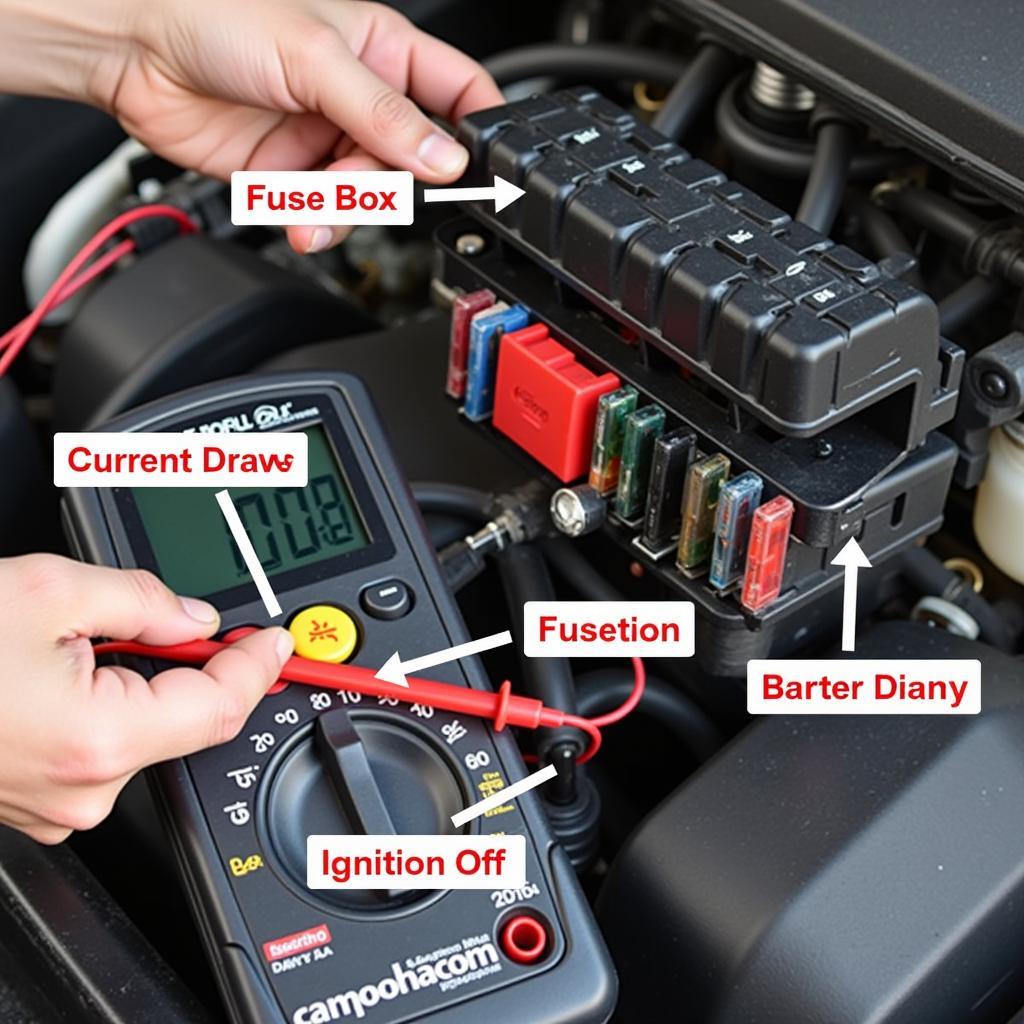The electric parking brake warning light on your Mazda is a safety feature that alerts you to a potential issue with your vehicle’s braking system. While it can be alarming to see any warning light illuminate on your dashboard, understanding the common causes of this particular warning light can help you address the problem quickly and safely.
What Does the Mazda Electric Parking Brake Warning Light Mean?
In newer Mazda models, you’ll typically find an electronic parking brake replacing the traditional handbrake lever. When engaged, this system uses an electric motor to apply the brakes, holding your vehicle stationary. The electric parking brake warning light serves several purposes:
- Parking Brake Engaged: The most straightforward reason for the light is that the parking brake is partially or fully engaged. This is often indicated by a flashing light accompanied by a beeping sound.
- System Malfunction: A solid or flashing light, even when the parking brake is disengaged, usually points to a potential malfunction within the electronic parking brake system itself.
- Low Brake Fluid: The electric parking brake system is inherently linked to your vehicle’s hydraulic brake system. If your brake fluid level is critically low, the warning light might illuminate.
Common Causes of Electric Parking Brake Warning Light on Mazda
Understanding the potential causes behind the electric parking brake warning light can help you take the right steps to diagnose and resolve the issue. Here are some of the most frequent culprits:
- Faulty Brake Switch: The brake pedal position sensor, also known as the brake light switch, can malfunction, sending incorrect signals to the car’s computer and triggering the warning light.
- Worn Brake Pads: While not directly related to the electric parking brake, excessively worn brake pads can activate the warning light as a general brake system warning.
- Brake Caliper Issues: Problems with the brake calipers, such as sticking pistons or seized components, can interfere with brake pad engagement and potentially trigger the warning light.
- Wiring Problems: Corrosion, loose connections, or damage to the wiring harness related to the electric parking brake system can lead to communication errors and activate the warning light.
- Control Module Fault: In some cases, a malfunctioning electric parking brake control module can be the root of the problem, requiring specialized diagnostics and potential replacement.
Troubleshooting the Electric Parking Brake Warning Light
If the warning light illuminates, don’t panic. Here’s a step-by-step guide to help you troubleshoot the issue:
- Check the Parking Brake Lever/Button: Ensure the parking brake is fully disengaged. Sometimes, a slight bump can partially engage the brake, triggering the light.
- Inspect Brake Fluid Level: Open the hood and locate the brake fluid reservoir. Check if the fluid level is within the minimum and maximum markers.
- Visual Inspection: Visually inspect the brake calipers, brake lines, and wiring harnesses near the wheels for any signs of damage, leaks, or corrosion.
When to Seek Professional Help
If the warning light persists after performing the basic checks, it’s crucial to consult with a qualified mechanic specializing in Mazda vehicles.
Remote Diagnostics and Software Solutions
In today’s technologically advanced world, remote diagnostics and software solutions play a crucial role in quickly and efficiently resolving automotive issues.
- Remote Diagnostics: Certified technicians can remotely access your Mazda’s onboard computer system to retrieve diagnostic trouble codes, providing insights into the underlying causes of the warning light.
- Software Updates and Reprogramming: Occasionally, software glitches or outdated software versions within the electric parking brake control module can be resolved through remote software updates or reprogramming.
electric parking brake warning light mazda cx 5
“Remote diagnostics and software solutions are transforming the way we address car problems. Instead of lengthy trips to the mechanic, we can now diagnose and, in some cases, even fix issues remotely, saving car owners valuable time and money.” – Mark Stevenson, Senior Automotive Electrician
Preventive Maintenance
Prevention is always better than cure. By following a regular maintenance schedule, you can significantly reduce the risk of encountering issues with your Mazda’s electric parking brake system:
- Regular Brake Inspections: Adhere to your Mazda’s recommended maintenance schedule for brake inspections.
- Timely Brake Fluid Flush: Have your brake fluid flushed and replaced at the recommended intervals to ensure optimal hydraulic system performance.
- Address Warning Lights Promptly: Never ignore any warning light on your dashboard, especially those related to your braking system.
2016 mazda 6 electric parking brake warning light
Frequently Asked Questions
Q: Can I still drive my Mazda with the electric parking brake warning light on?
A: It’s highly discouraged. While you might be able to drive short distances, doing so can exacerbate the underlying issue and potentially lead to more serious damage or safety hazards.
Q: Is the electric parking brake covered under my Mazda warranty?
A: In most cases, the electric parking brake system components are covered under the Mazda factory warranty or extended warranty plans.
Q: How much does it cost to fix a Mazda electric parking brake problem?
A: The repair costs can vary widely depending on the underlying cause, the severity of the issue, and labor costs in your area.
Conclusion
The electric parking brake warning light in your Mazda is a crucial safety feature designed to alert you to potential braking system problems. By understanding its causes and following the troubleshooting steps outlined in this guide, you can address the issue proactively and ensure the safe operation of your vehicle. Remember, if you’re ever in doubt, it’s always best to seek the expertise of a qualified Mazda mechanic.

